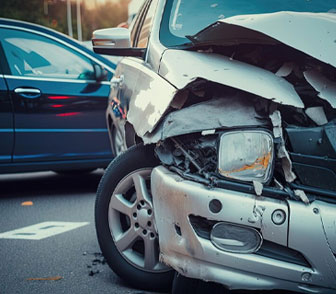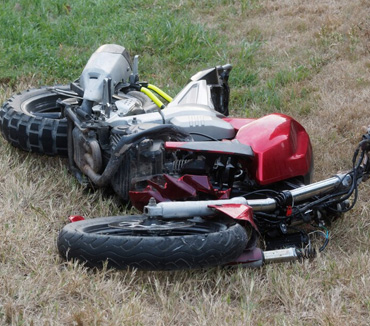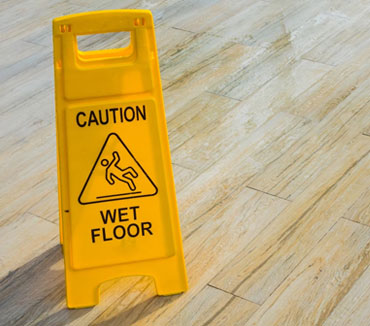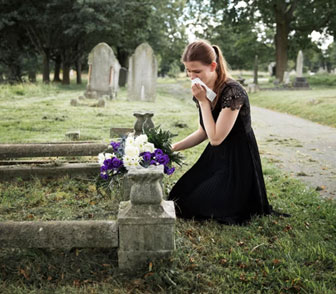OSHA’s “Fatal Four” Construction Accidents
Construction sites are filled with hazards. From heavy machinery to moving objects and working on high places, construction workers undoubtedly face some of the most dangerous workplace conditions. There are, however, certain hazards that are more common than others. In fact, the United States Department of Labor’s Occupational Safety and Health Administration (OSHA) has named the top hazards the “Fatal Four” because they contribute to 57% of all fatalities in the construction industry each year.
Luckily, many of these accidents can be prevented when employers and employees take certain measures to improve construction site safety.
Here is what you need to know about each one of the fatal four and what can be done to prevent them.
OSHA’s “Fatal Four” Construction Accidents
1. Falls (36%)
Falls are, by far, the number one cause of fatal accidents on construction sites. Construction workers spend much of their jobs at great heights from roofs, ladders or scaffolds. One simple misstep can lead to a fatal fall to the ground below.
Some of the most common causes of falls include:
- Unprotected sides or holes
- Lack of proper guardrails
- Falling into holes in the floor and walls
- Failing to wear proper Personal Fall Arrest (PFA) systems
- Failing to give workers the proper PFA systems
- Improper training
According to OSHA, fall protection in the construction industry must be provided when elevations are six feet or greater. Additionally, fall prediction must be provided when working over hazardous equipment and machinery, no matter the fall distance.
Preventing Falls:
Incorporating all OSHA fall protection requirements is crucial to preventing such events. This includes alerting workers of fall hazards, providing adequate training, providing proper PFA systems, and teaching workers how to identify fall hazards before work begins.
- Providing fall arrest equipment
- Installing and maintaining perimeter protection
- Covering and securing floor openings
- Labeling floor opening covers
- Promoting safe ladder and scaffold use
2. Struck by Objects (10%)
A struck-by hazard is considered anything that causes injury or death by forcible coming into contact with someone. Whether workers drop materials, employers store tools and supplies improperly, or equipment accidents occur, being struck by an object is dangerous.
There are four main ways that this occurs on a construction site:
- Flying objects
- Swinging objects
- Falling objects
- Rolling objects
Preventing Struck-By Accidents:
Prevention of struck-by hazards starts by ensuring that all workers are given the right tools and training needed to do their jobs safely. Companies should also consistently ensure operators and signal personnel have the requirements needed to fulfill their job.
- Wearing high-visibility clothes near equipment and vehicles
- Never positioning yourself between moving and fixed objects
3. Electrocutions (8%)
Construction sites are home to all sorts of hazards, including live wires, unfinished electrical systems, and even dangerous power lines. For non-electrical workers, the leading cause of electrocution injuries is contact with overhead or underground power lines. These fatalities are often the result of the failure to de-energize or safeguard the power lines and the failure to maintain minimum clearance distances from power lines.
Additionally, electrocutions often occur as a result of improper use or care of extension cords.
Such risks can be caused by:
- Contact with overhead power lines
- Poorly maintained extension cords
- Unexpected lighting strikes
Preventing Electrocutions:
Strict adherence to OSHA guidelines regarding electrical safety in the workplace can ultimately be the difference between life and death. You are entitled to work on a safe construction site. Electrical safety should always be part of the job.
Additionally, here are some ways to improve electrical safety for construction workers:
- Locate and label all utilities and power sources before starting work
- Look for overhead power lines when operating equipment
- Report all exposed, frayed, or damaged electrical wiring right away
- Refraining from operating portable electrical tools that are not grounded or double insulated
- Using ground-fault circuit interrupters for protection
- Being mindful of electrical hazards on ladders, scaffolds, or other platforms
4. Caught In/Between (2%)
Caught-in/between injuries apply whenever construction workers are caught-in or compressed by equipment or objects, or struck, caught, or crushed in a collapsing structure, equipment, or material. Sadly, workers are unlikely to survive this kind of accident.
These types of dangers are often created when heavy equipment is involved in the construction work. The following are examples of some events that should be considered caught-in accidents:
- Cave-ins (trenching)
- Getting pulled into or caught in machinery and equipment
- Getting compressed or crushed between rolling, sliding, or shifting objects
Preventing Caught In/Between Accidents:
- Be aware of your surroundings when working
- When operating heavy machinery, keep a proper lookout for people in your path
- Enter trenches with the right protective system in place
- Ensure you are not positioned between moving and fixed objects
- Have an adequate protective system in place
Legal Liability for Fatal Four Accidents
If a fatal four accident occurs, surviving family members may be entitled to financial compensation. In almost all construction accident cases, workers’ compensation is available to the victim’s family. In most cases, the amount of workers’ compensation is substantial. For this reason, it is important to work with an experienced accident attorney to claim the maximum amount of workers’ compensation. In addition, the business may have liability insurance that can cover losses if workers’ compensation does not apply.
Along with workers’ compensation, third parties may have legal liability when a fatal accident occurs. The construction industry often relies on contractors to complete work. Because of the nature and prevalence of contractors in construction work, a traditional legal claim may be available to family members when a fatal four accident occurs. Our attorneys can help you explore all of your options for compensation.
Our California Workplace Injury Lawyer is Here to Help
If you or a loved one was injured on a construction site, you may be entitled to pursue workers’ compensation benefits. This depends on whether you were legally hired as an employee or an independent contractor at the time of your work accident. However, keep in mind that some employers purposefully classify workers as independent contractors in order to avoid liability and having to pay workers’ comp benefits.
If you have been injured on the job site, the law office of Brent A. Duque is here to help you recover the compensation you deserve for the pain and suffering you have endured as a result of a workplace injury. Our Riverside office of construction site accident attorneys is proud to serve the needs of construction accident victims and their families who have suffered the injury or wrongful death of a loved one in a workplace accident. Workers compensation may not be nearly enough; you may need a personal injury attorney to help you receive the help you need when injured on the job. Call our attorneys today at 1-877-241-9554 to discuss your case. The consultation is absolutely free.
Request A
Free Consultation
Fields Marked With An ” *” Are Required










